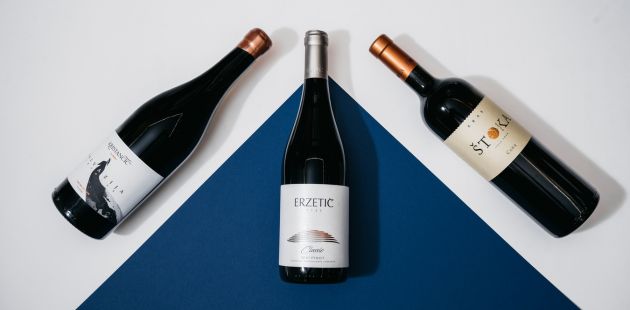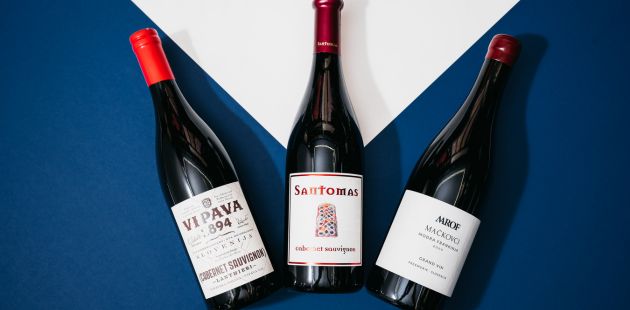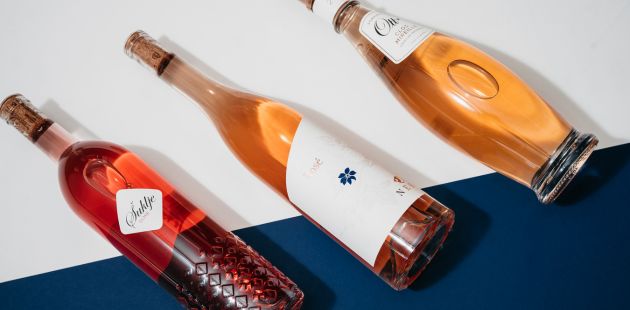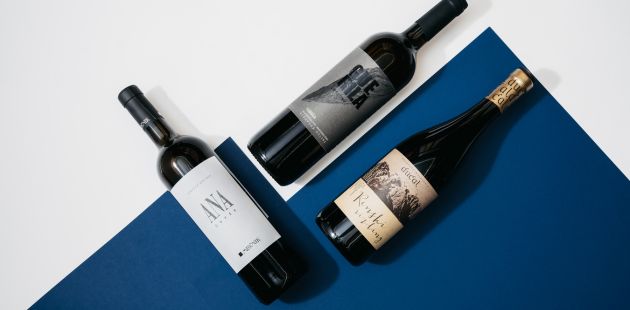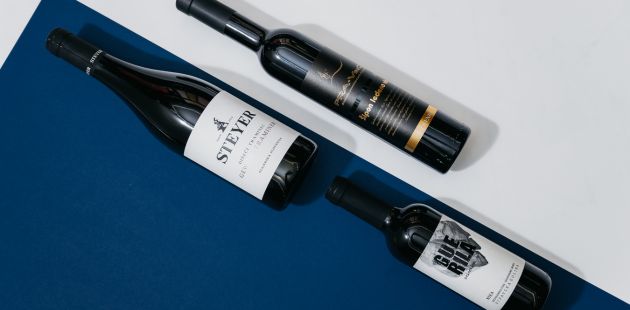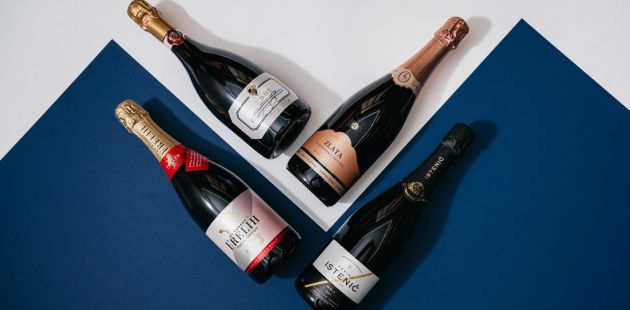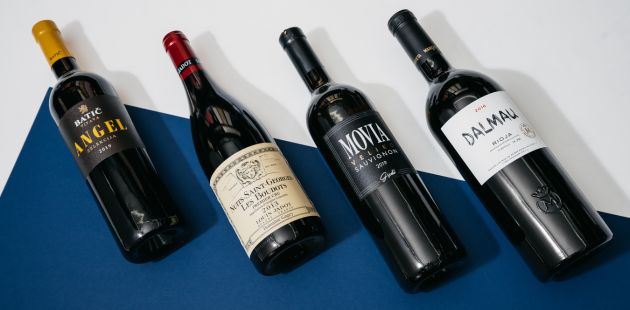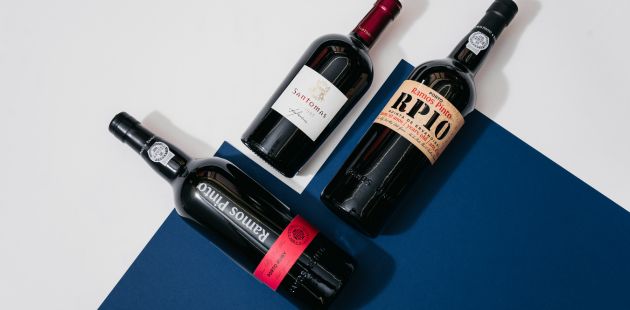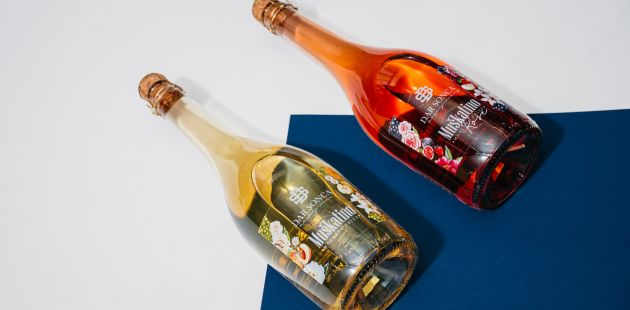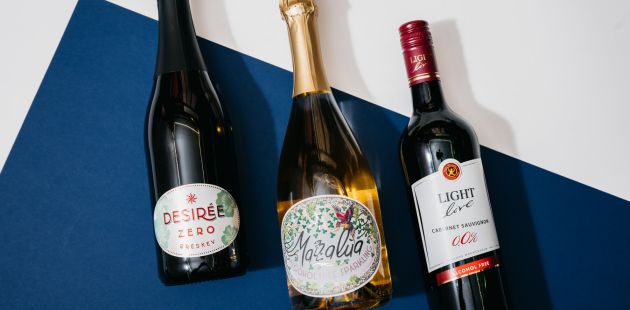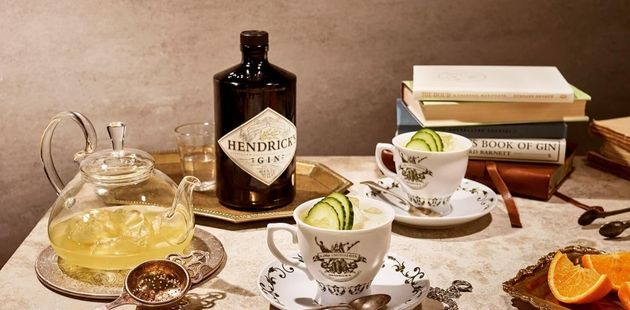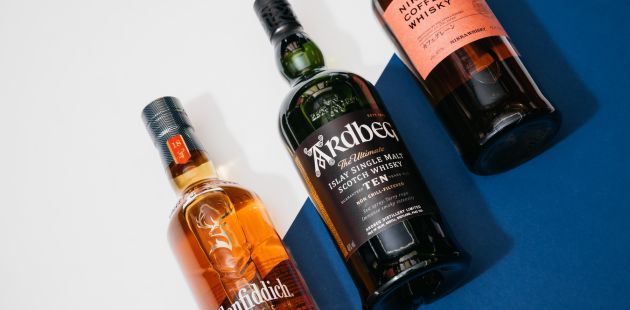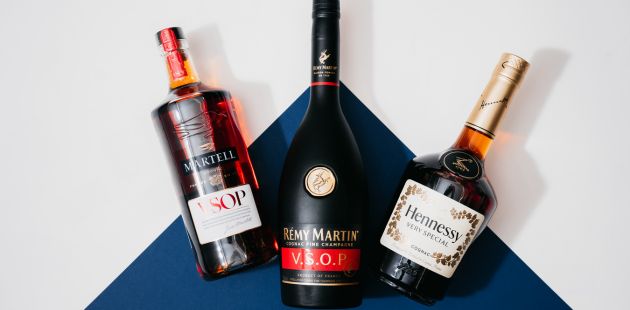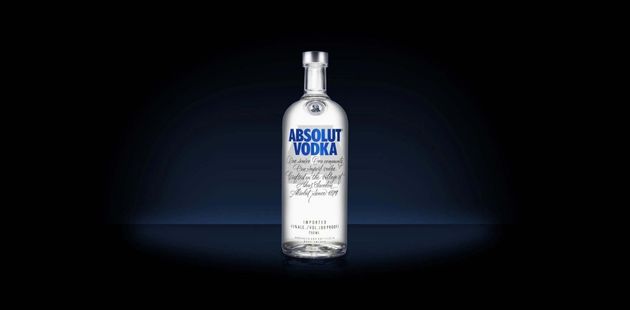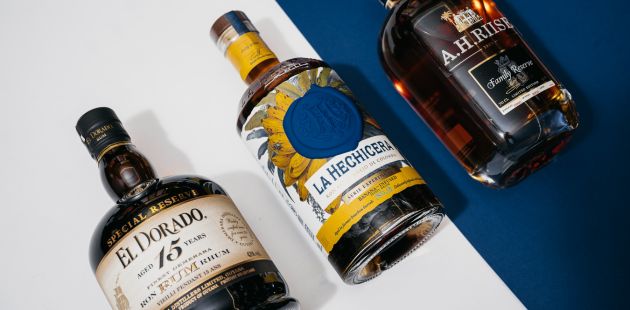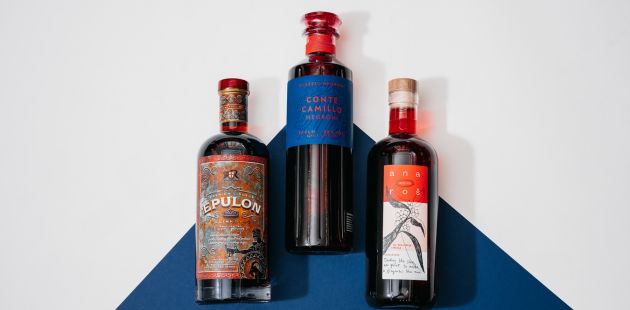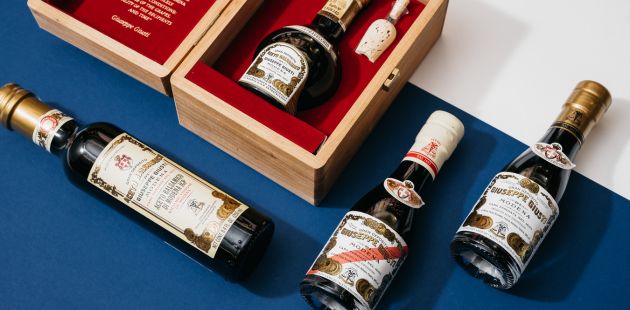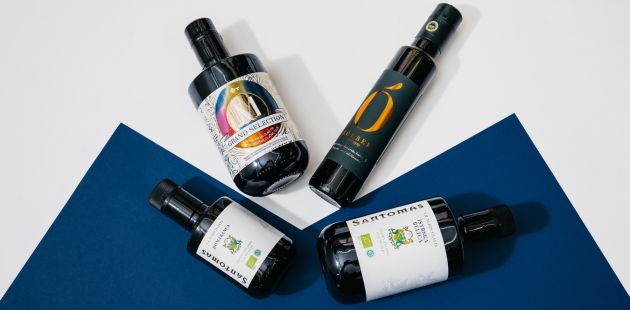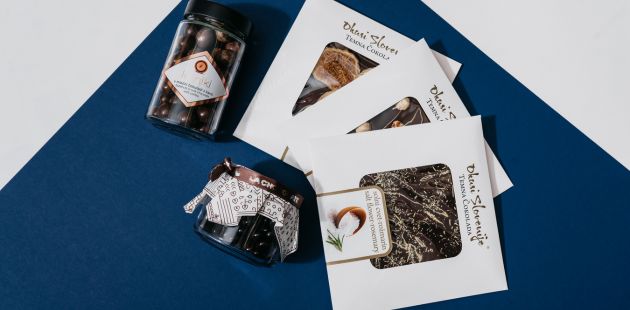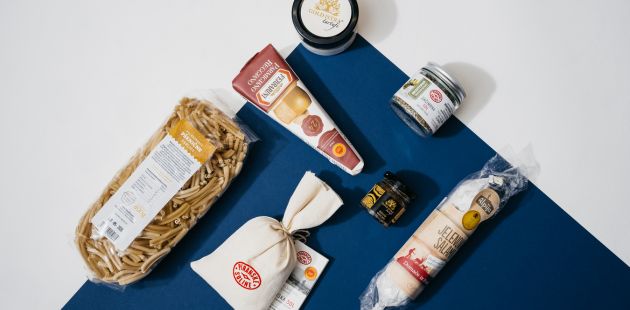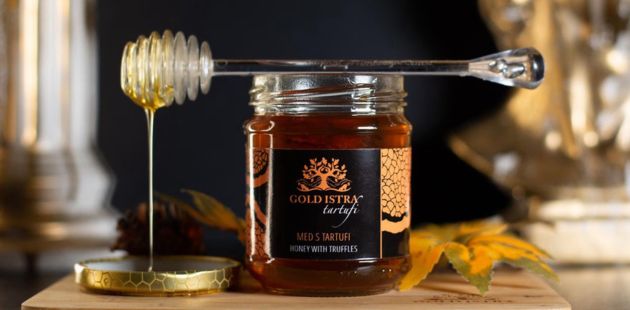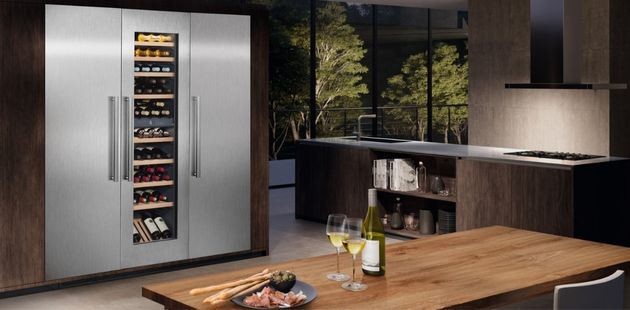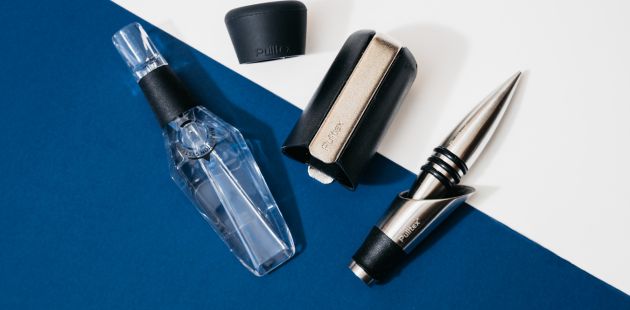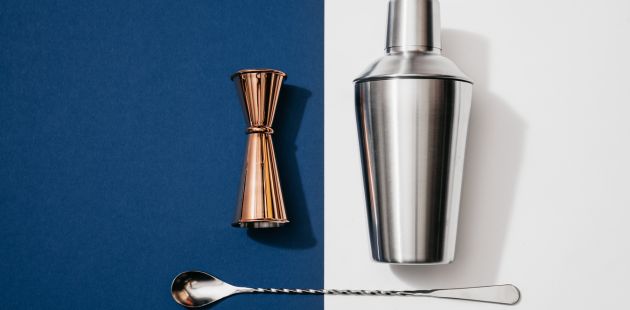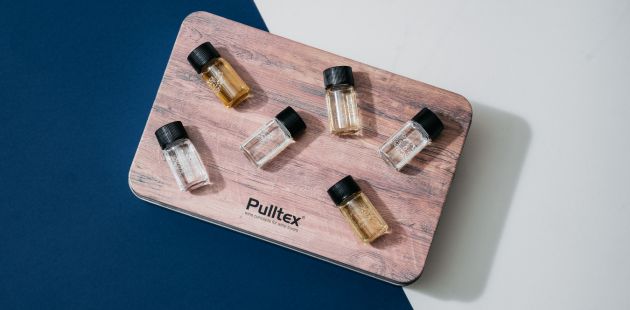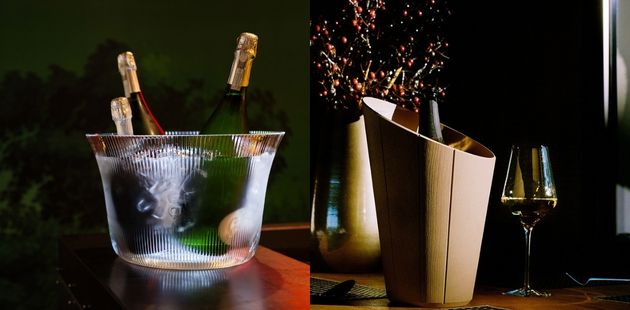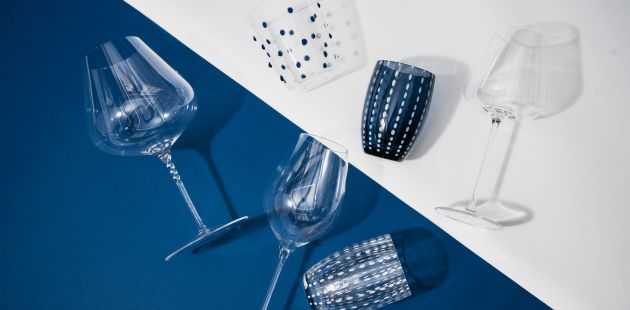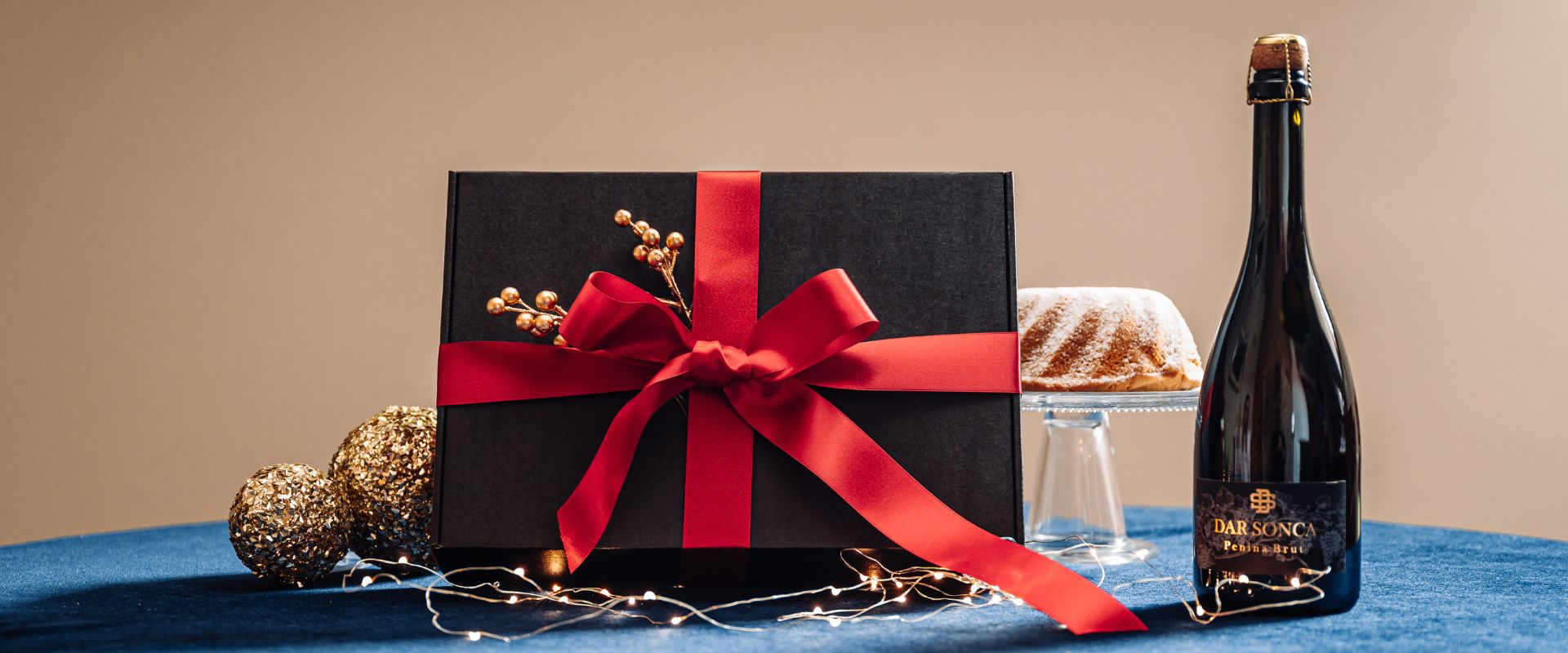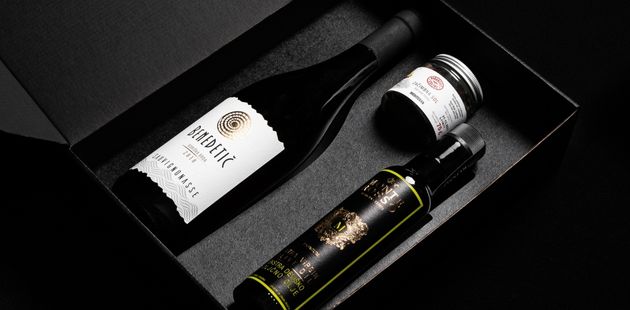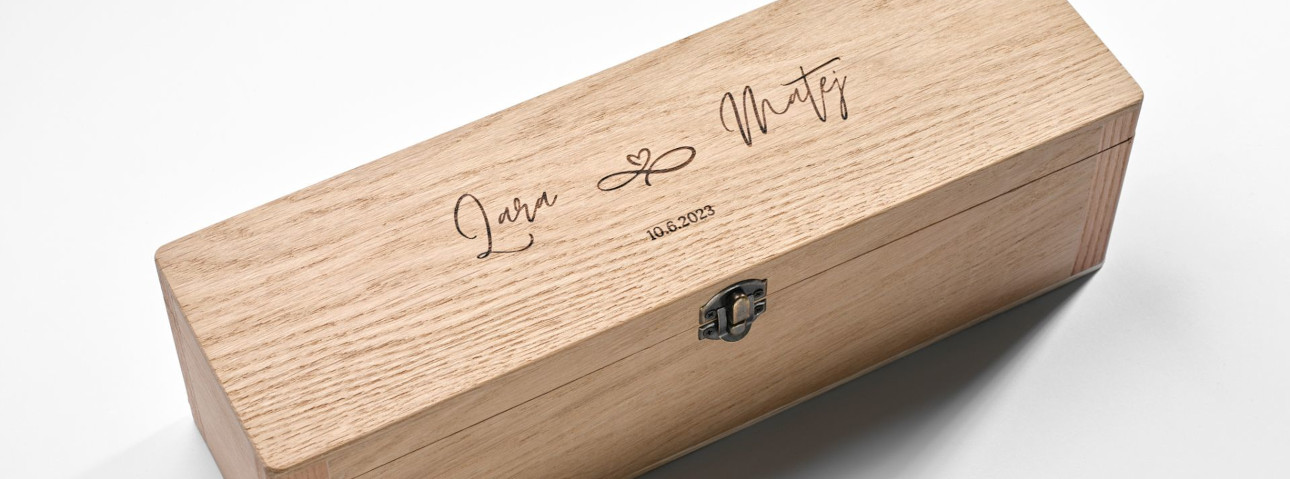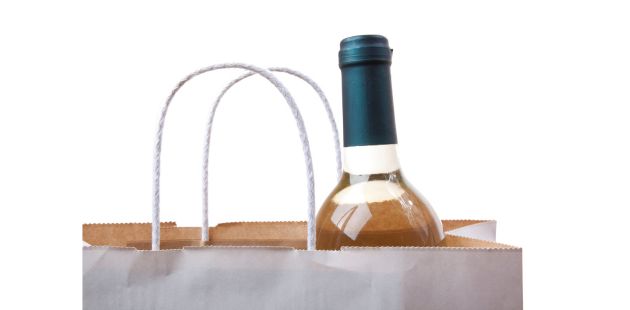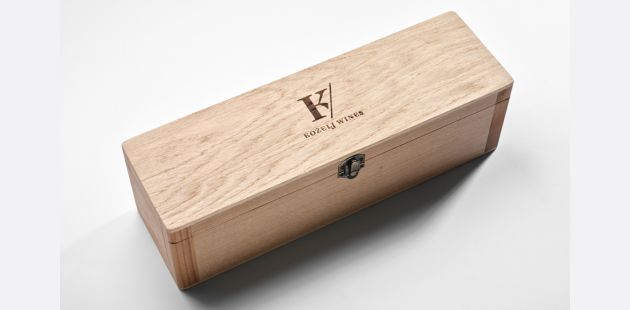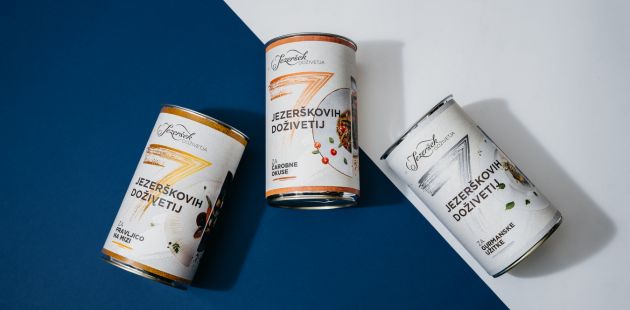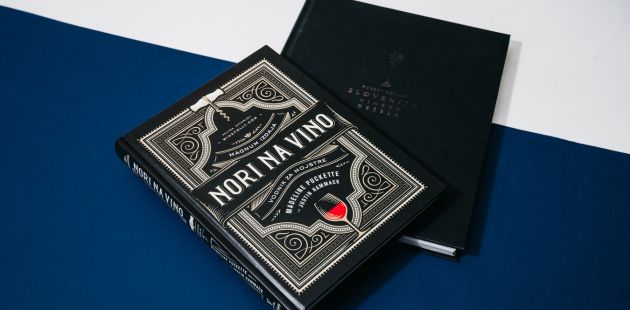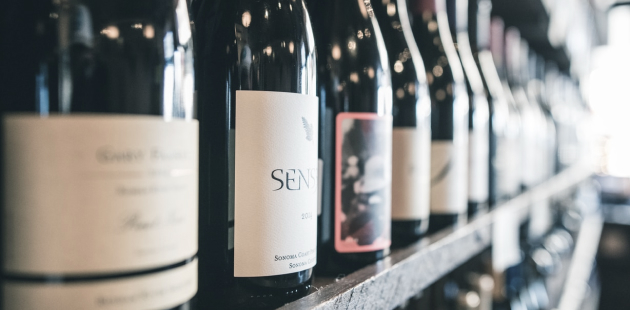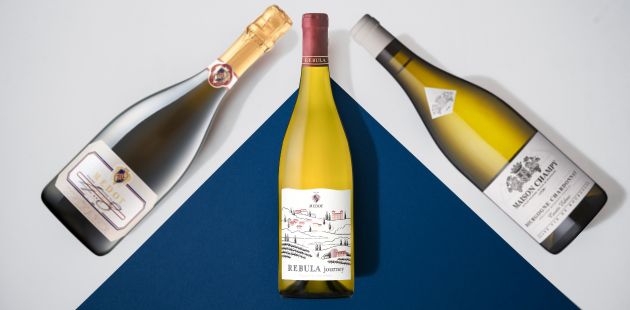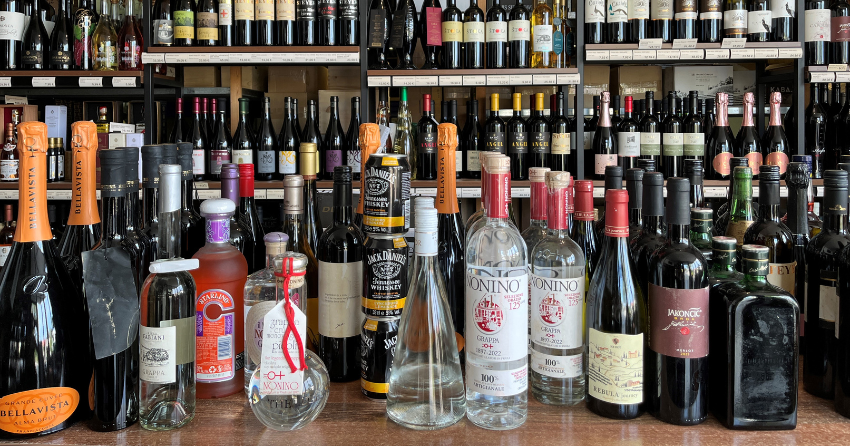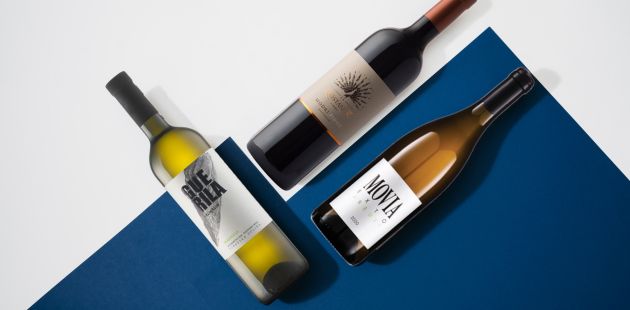Wine dictionary
Explanation of words
We have carefully prepared for you an explanation of the most common words in the wine world. Choose a word on the left to explain.
Alcohol level
The alcohol level tells us how many grams of alcohol per litre the wine contains. The most important alcohol in wine is ethanol. It gives the wine stability, acts as a solvent and conveys sensory properties.
Anthocyanins
Pigments found in the grape skin of red grapes that affect the colour of wine. The longer the grape juice is in contact with the grape skin, the more anthocyanins leach into the grape juice and the stronger the colour of the wine will be.
Alcoholic Fermentation
A process in which yeast converts sugar into alcohol (ethanol) and other by-products.
Aftertaste
One of the most important indicators of the wine’s quality. It denotes the time that the flavour lingers in the mouth after wine tasting.
Amphora
A special large earthenware container, buried in the ground, in which the wine is fermented and matured.
Bâtonnage
A French term for the stirring of the lees. While the wine matures on the lees, the lees (dead yeast cells) should be stirred. This introduces a small amount of oxygen into it and prevents the reduction in wine (smell of sulfur).
Bouquet
A French term denoting the tertiary aromas of wine. During the vinification process, new aromas are developed, which represent an important criterion in wine evaluation.
Blend
Wine produced from several grape varieties.
Balance
A balanced ratio of acids, tannins, sugars, alcohol and other elements in wine.
Biological deacidification or Malolactic fermentation
An enzymatic conversion that usually occurs in parallel with or after the alcoholic fermentation. In this process, malic acid is converted into lactic acid, which is less aggressive and less acidic.
Body of Wine
Wine body can be described by three categories: light-bodied, medium-bodied and full-bodied. Several factors contribute to the fullness of body, including alcohol content, tannins and the concentration of fruity flavours, sugar and glycerol.
Blending
The process of making non-vintage sparkling wine by mixing different varieties of grapes from different vineyards and different vintages.
Beerenauslese or Berry Selection
A German term for predicate wines with a protected designation of origin, produced from overripe and individually selected grapes.
Barrique
A French term for a barrel with the capacity of 225 litres. They are made by a special process of toasting the inside of the barrel and are used for alcoholic fermentation and maturation of wine.
Botrytis Cinerea
A type of noble rot that infects the grapes, reducing the water content in the grape berry, increasing the concentration of sugars and reducing the concentration of tartaric acid. The wines infected with this fungus are of a special quality.
Complex Wine
A subjective term used for wine that has a wide range of aromas, notes and flavours.
Carbonic Maceration
Maceration that takes place in a carbon dioxide-rich atmosphere and enables a rapid production of red wine. Wines produced by carbonic maceration can be put on the market faster and have a distinct fruity aroma.
Cuvée or Blend
A French term used for both still and sparkling wines, denoting that the wine is produced from different grape varieties.
Charmat or Tank Method
A method of sparkling wine production in which the second fermentation takes place in a high-pressure vessel. Compared to the traditional or classic method, the Charmat method is faster and cheaper. There are fewer bubbles and less elegant.
Closed Wine
A wine that needs some time to develop aroma.
Clarification of wine
The process of removing insoluble particles from wine. After alcoholic fermentation, the young wine begins to clarify, and this process can be accelerated by the addition of fining agents that bind to the suspended particles.
Cork Taint
A term referring to a wine fault characterised by an unpleasant mouldy or musty smell.
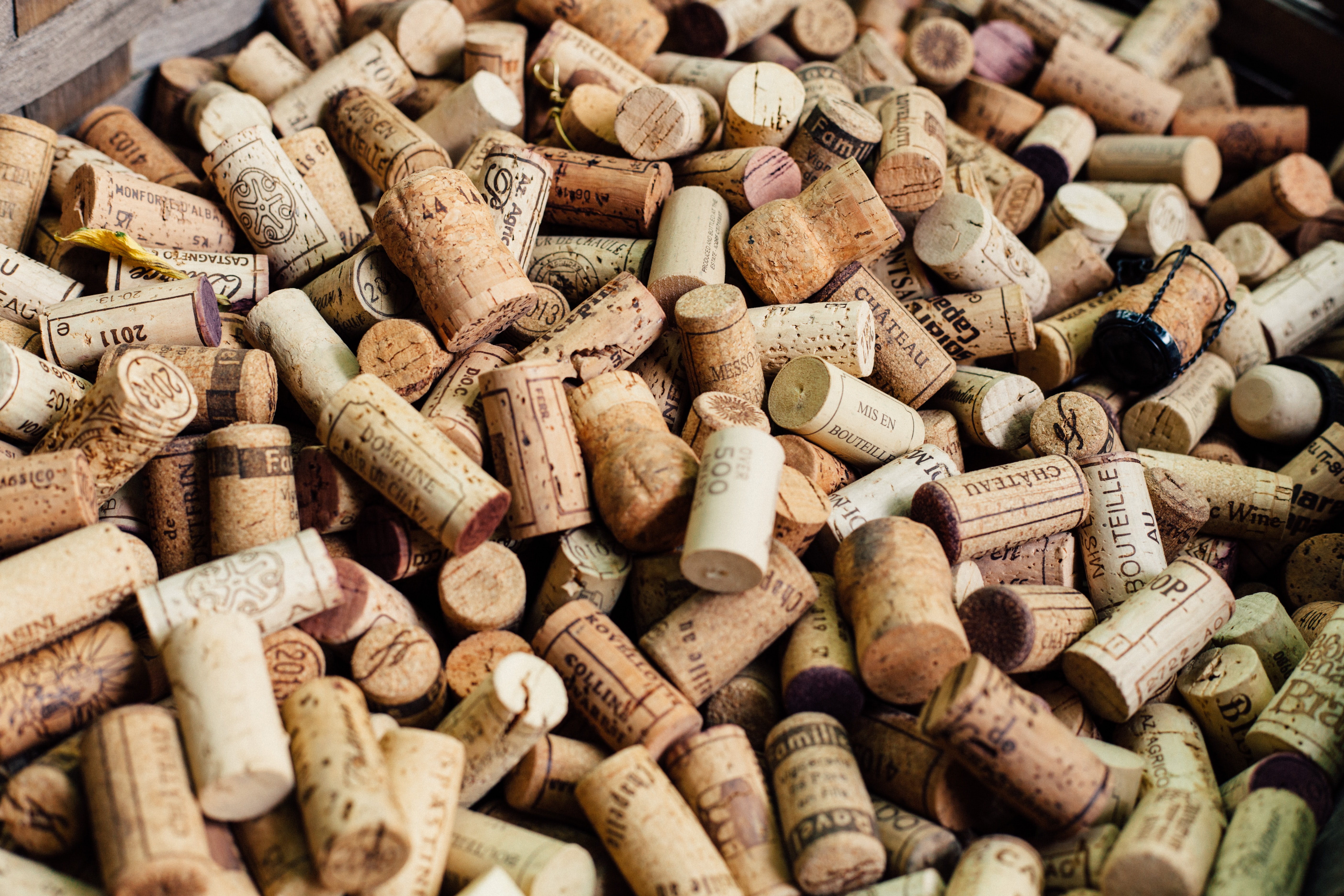
Decanter
A vessel used for decanting wine.
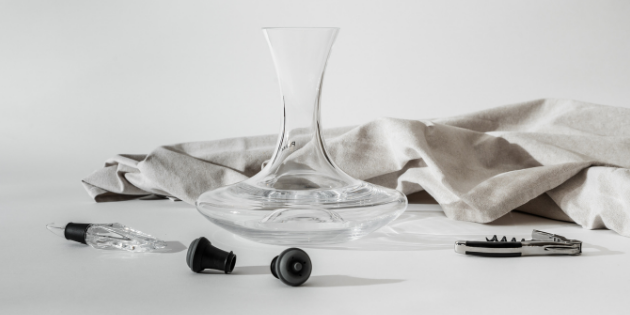
Disgorgement
The process of removing the sediment (yeast residue) from the bottle after the secondary fermentation in the traditional method of sparkling wine production.
Dosage or Liqueur D`Expédition
A ‘liqueur’ that is the secret of every sparkling wine maker. It is basically a mixture of wine, sparkling wine and sugar that is added to the bottle after disgorging. This addition of a sweetening ‘liqueur’ determines the final taste.
Decanting
A technique of pouring wine from a bottle into another container. This aerates the wine, allowing it to breathe and expand its range of flavours and aromas.

Elegant wine
A harmonious wine with well-balanced characteristics, light and with pleasant aromas.
Floral Aromas
Aromas of dried and fresh flowers.
Fortified wine
The fermentation of the must is interrupted by the addition of a spirit (most often brandy), which raises the alcohol level. Some of the best-known examples of fortified wine are port, vermouth, Madeira, sherry and Marsala.
Free-run Juice
The juice released from grapes before pressing, either spontaneously by gravity or dynamically with mechanical drainers.
Fresh Wine
A term used to describe a young wine with a vibrant, fresh and clean character.
Filtration
The process of separating the liquid from the sediment through a filter, resulting in a clear and stable wine.
Harmonious wine
A wine whose components are in the right proportions.
Harmony
A wine is harmonious and well-balanced when its alcohol level, acidity, residual sugar, tannins and fruitiness are in a harmonious relationship.
Ice wine
Premium wines with a protected designation of origin, produced from grapes that have been subjected to freezing temperatures before harvesting.
Lees
The particles that settle to the bottom of the container during or after the alcoholic fermentation. They consist of plant material, tartar, inactive dead yeast cells and particles of the unreacted fining agents.
Magnum
A term for a 1.5 litre bottle.
Micro-oxygenation
A process in which a controlled concentration of oxygen is added into wine. Oxygen accelerates wine maturation, stabilises the colour and reduces the bitterness and astringency of tannins.
Maturation on lees
After fermentation, the wine stays on the yeast (lees) for a period of time, usually 2 to 8 months. During this time, the wine acquires a more complex aroma, a fuller body and better harmony.
Maceration
Decomposition of solid parts of grapes in the mash after destemming and mashing. The grapes break down, the enzymes begin to work and the compounds in the grape skins, flesh and seeds leach into the must.
Maturation
There are two stages of wine maturation: maturation on lees and maturation in bottles (ageing). But in general, maturation refers to the period of storage during which the wine’s quality improves.
Millésime or Vintage Sparkling Wine
Sparkling wine produced from a base wine of one vintage year.
Must
A liquid grape product with an actual alcoholic strength by volume of at least 1% but not more than 3/5 of the total alcoholic strength.
Orange Wine
Wine produced from white grapes that were macerated for several months.
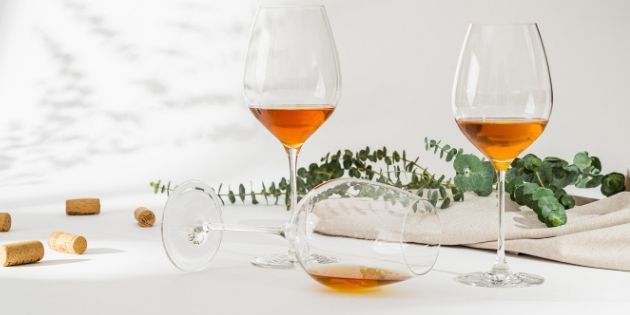
Oxidation
A process that occurs when wine is exposed to oxygen. This triggers a reaction that turns alcohol into acetaldehyde, which negatively affects the aroma. Oxidation can be avoided by using inert gases, sulfur and controlled racking.
Oaky or Woody Aromas
Aromas that develop in wine during maturation in oak barrels. They depend on the origin and quality of the wood and the time of maturation. New barrique barrels produce stronger aromas while the old ones impart milder aromas.
PDO - protected designation of origin
This acronym tells us in which winegrowing district the wine was produced. This category includes quality wines and premium wines with a protected geographical origin and wines with a recognised traditional denomination.
Pomace Cap
The residue of grape skins, seeds and stems that rises to the surface of the vessel. The cap must be regularly submerged to maintain the contact between the pomace and the must.
PGO
Designation for a regional wine with a protected geographical indication.
Pressed Grape Juice
During the pressing of the grapes, several different quality grades of must or grape juice are produced. The free-run juice is of the highest quality, followed by the first press, obtained by pressing the drained pomace.
Predicate wine
For predicate wines or predicates, the grapes must stay on the vine for a long time after their physiological ripeness. This reduces the water content and increases the sugar content in the grapes.
Red Wine
Wine produced from red varieties of grapes.
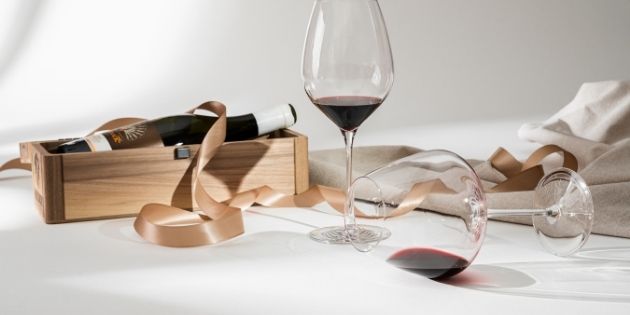
Reducing Sugar
The residual unfermented sugar remaining in the final wine.
Racking
The process of transferring wine from one container/barrel to another, removing sediment.
Rosé
Wine produced from red varieties of grapes using the method of white wine production.
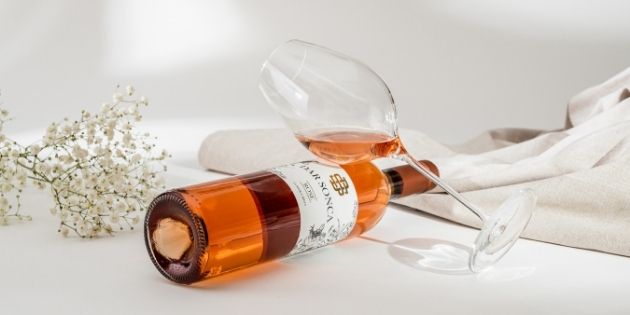
Remuage or Riddling
Before disgorging, the sediment must be moved to the neck of the bottle. This is done by tilting and turning the bottles in special racks where the bottles are turned upside down.
Secondary Fermentation
The term is used in the production of both still and sparkling wines. For still wines, the term is used in relation to malolactic fermentation, while for sparkling wines, it refers to the second fermentation that takes place. The results are bubbles.
Still Wine
The category of still wine includes wines with an air pressure below 105 Pa at 20 °C.
Sensory Properties
The properties of food and drink that we perceive with our five basic senses. In addition to the five basic senses, the result of sensory evaluation is affected by many other senses or states: sense of heat and cold, appetite, hunger, thirst, etc..
Structure Of Wine
A term used to describe the relationship between the wine’s alcohol, acidity, sweetness and tannins.
Trockenbeerenauslese or Dry Berry Selection
A German term for premium wines with a protected designation of origin, produced from individually selected dried grapes.
Tirage or Liqueur De Tirage
A sweet solution (‘liqueur’) added to the wine to kick-start the second alcoholic fermentation. It contains the base wine, sucrose, yeast and additional nutrients for yeast.
Tannins
A group of chemical compounds that leach into wine from grape skins, seeds, stems and oak barrels. The concentration of tannins is crucial for the production of full red wines suitable for long maturation.
Terroir
A French term used to describe all the factors that affect the wine produced in a certain area.
Typicity
A term that describes how well a wine expresses the characteristics inherent to the variety of grape from which it was produced.
Tears of Wine or Wine Legs
The viscous droplets that form on the sides of the glass when the wine is swirled, due to the wine’s alcohol and glycerol content.
Vinification or Winemaking
A term that covers all processes from harvesting to bottling.
Varietal Wine
Wine in which a particular variety is in predominant proportion (at least 85%).
Wine Fault
During the vinification process and maturation, changes may occur in the wine with regards to appearance, smell and taste.
White wine
Wine produced from white varieties of grapes.
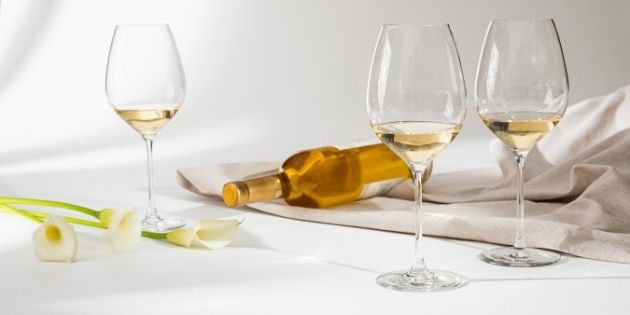
Yeasts
Unicellular microorganisms that convert sugar into alcohol (ethanol) and carbon dioxide. The most common species of yeast used in winemaking is Saccharomyces cerevisiae.
Explanation of words
We have carefully prepared for you an explanation of the most common words in the wine world. Choose a word on the left to explain.
Alcohol level
The alcohol level tells us how many grams of alcohol per litre the wine contains. The most important alcohol in wine is ethanol. It gives the wine stability, acts as a solvent and conveys sensory properties.
Anthocyanins
Pigments found in the grape skin of red grapes that affect the colour of wine. The longer the grape juice is in contact with the grape skin, the more anthocyanins leach into the grape juice and the stronger the colour of the wine will be.
Alcoholic Fermentation
A process in which yeast converts sugar into alcohol (ethanol) and other by-products.
Aftertaste
One of the most important indicators of the wine’s quality. It denotes the time that the flavour lingers in the mouth after wine tasting.
Amphora
A special large earthenware container, buried in the ground, in which the wine is fermented and matured.
Bâtonnage
A French term for the stirring of the lees. While the wine matures on the lees, the lees (dead yeast cells) should be stirred. This introduces a small amount of oxygen into it and prevents the reduction in wine (smell of sulfur).
Bouquet
A French term denoting the tertiary aromas of wine. During the vinification process, new aromas are developed, which represent an important criterion in wine evaluation.
Blend
Wine produced from several grape varieties.
Balance
A balanced ratio of acids, tannins, sugars, alcohol and other elements in wine.
Biological deacidification or Malolactic fermentation
An enzymatic conversion that usually occurs in parallel with or after the alcoholic fermentation. In this process, malic acid is converted into lactic acid, which is less aggressive and less acidic.
Body of Wine
Wine body can be described by three categories: light-bodied, medium-bodied and full-bodied. Several factors contribute to the fullness of body, including alcohol content, tannins and the concentration of fruity flavours, sugar and glycerol.
Blending
The process of making non-vintage sparkling wine by mixing different varieties of grapes from different vineyards and different vintages.
Beerenauslese or Berry Selection
A German term for predicate wines with a protected designation of origin, produced from overripe and individually selected grapes.
Barrique
A French term for a barrel with the capacity of 225 litres. They are made by a special process of toasting the inside of the barrel and are used for alcoholic fermentation and maturation of wine.
Botrytis Cinerea
A type of noble rot that infects the grapes, reducing the water content in the grape berry, increasing the concentration of sugars and reducing the concentration of tartaric acid. The wines infected with this fungus are of a special quality.
Complex Wine
A subjective term used for wine that has a wide range of aromas, notes and flavours.
Carbonic Maceration
Maceration that takes place in a carbon dioxide-rich atmosphere and enables a rapid production of red wine. Wines produced by carbonic maceration can be put on the market faster and have a distinct fruity aroma.
Cuvée or Blend
A French term used for both still and sparkling wines, denoting that the wine is produced from different grape varieties.
Charmat or Tank Method
A method of sparkling wine production in which the second fermentation takes place in a high-pressure vessel. Compared to the traditional or classic method, the Charmat method is faster and cheaper. There are fewer bubbles and less elegant.
Closed Wine
A wine that needs some time to develop aroma.
Clarification of wine
The process of removing insoluble particles from wine. After alcoholic fermentation, the young wine begins to clarify, and this process can be accelerated by the addition of fining agents that bind to the suspended particles.
Cork Taint
A term referring to a wine fault characterised by an unpleasant mouldy or musty smell.

Decanter
A vessel used for decanting wine.

Disgorgement
The process of removing the sediment (yeast residue) from the bottle after the secondary fermentation in the traditional method of sparkling wine production.
Dosage or Liqueur D`Expédition
A ‘liqueur’ that is the secret of every sparkling wine maker. It is basically a mixture of wine, sparkling wine and sugar that is added to the bottle after disgorging. This addition of a sweetening ‘liqueur’ determines the final taste.
Decanting
A technique of pouring wine from a bottle into another container. This aerates the wine, allowing it to breathe and expand its range of flavours and aromas.

Elegant wine
A harmonious wine with well-balanced characteristics, light and with pleasant aromas.
Floral Aromas
Aromas of dried and fresh flowers.
Fortified wine
The fermentation of the must is interrupted by the addition of a spirit (most often brandy), which raises the alcohol level. Some of the best-known examples of fortified wine are port, vermouth, Madeira, sherry and Marsala.
Free-run Juice
The juice released from grapes before pressing, either spontaneously by gravity or dynamically with mechanical drainers.
Fresh Wine
A term used to describe a young wine with a vibrant, fresh and clean character.
Filtration
The process of separating the liquid from the sediment through a filter, resulting in a clear and stable wine.
Harmonious wine
A wine whose components are in the right proportions.
Harmony
A wine is harmonious and well-balanced when its alcohol level, acidity, residual sugar, tannins and fruitiness are in a harmonious relationship.
Ice wine
Premium wines with a protected designation of origin, produced from grapes that have been subjected to freezing temperatures before harvesting.
Lees
The particles that settle to the bottom of the container during or after the alcoholic fermentation. They consist of plant material, tartar, inactive dead yeast cells and particles of the unreacted fining agents.
Magnum
A term for a 1.5 litre bottle.
Micro-oxygenation
A process in which a controlled concentration of oxygen is added into wine. Oxygen accelerates wine maturation, stabilises the colour and reduces the bitterness and astringency of tannins.
Maturation on lees
After fermentation, the wine stays on the yeast (lees) for a period of time, usually 2 to 8 months. During this time, the wine acquires a more complex aroma, a fuller body and better harmony.
Maceration
Decomposition of solid parts of grapes in the mash after destemming and mashing. The grapes break down, the enzymes begin to work and the compounds in the grape skins, flesh and seeds leach into the must.
Maturation
There are two stages of wine maturation: maturation on lees and maturation in bottles (ageing). But in general, maturation refers to the period of storage during which the wine’s quality improves.
Millésime or Vintage Sparkling Wine
Sparkling wine produced from a base wine of one vintage year.
Must
A liquid grape product with an actual alcoholic strength by volume of at least 1% but not more than 3/5 of the total alcoholic strength.
Orange Wine
Wine produced from white grapes that were macerated for several months.

Oxidation
A process that occurs when wine is exposed to oxygen. This triggers a reaction that turns alcohol into acetaldehyde, which negatively affects the aroma. Oxidation can be avoided by using inert gases, sulfur and controlled racking.
Oaky or Woody Aromas
Aromas that develop in wine during maturation in oak barrels. They depend on the origin and quality of the wood and the time of maturation. New barrique barrels produce stronger aromas while the old ones impart milder aromas.
PDO - protected designation of origin
This acronym tells us in which winegrowing district the wine was produced. This category includes quality wines and premium wines with a protected geographical origin and wines with a recognised traditional denomination.
Pomace Cap
The residue of grape skins, seeds and stems that rises to the surface of the vessel. The cap must be regularly submerged to maintain the contact between the pomace and the must.
PGO
Designation for a regional wine with a protected geographical indication.
Pressed Grape Juice
During the pressing of the grapes, several different quality grades of must or grape juice are produced. The free-run juice is of the highest quality, followed by the first press, obtained by pressing the drained pomace.
Predicate wine
For predicate wines or predicates, the grapes must stay on the vine for a long time after their physiological ripeness. This reduces the water content and increases the sugar content in the grapes.
Red Wine
Wine produced from red varieties of grapes.

Reducing Sugar
The residual unfermented sugar remaining in the final wine.
Racking
The process of transferring wine from one container/barrel to another, removing sediment.
Rosé
Wine produced from red varieties of grapes using the method of white wine production.

Remuage or Riddling
Before disgorging, the sediment must be moved to the neck of the bottle. This is done by tilting and turning the bottles in special racks where the bottles are turned upside down.
Secondary Fermentation
The term is used in the production of both still and sparkling wines. For still wines, the term is used in relation to malolactic fermentation, while for sparkling wines, it refers to the second fermentation that takes place. The results are bubbles.
Still Wine
The category of still wine includes wines with an air pressure below 105 Pa at 20 °C.
Sensory Properties
The properties of food and drink that we perceive with our five basic senses. In addition to the five basic senses, the result of sensory evaluation is affected by many other senses or states: sense of heat and cold, appetite, hunger, thirst, etc..
Structure Of Wine
A term used to describe the relationship between the wine’s alcohol, acidity, sweetness and tannins.
Trockenbeerenauslese or Dry Berry Selection
A German term for premium wines with a protected designation of origin, produced from individually selected dried grapes.
Tirage or Liqueur De Tirage
A sweet solution (‘liqueur’) added to the wine to kick-start the second alcoholic fermentation. It contains the base wine, sucrose, yeast and additional nutrients for yeast.
Tannins
A group of chemical compounds that leach into wine from grape skins, seeds, stems and oak barrels. The concentration of tannins is crucial for the production of full red wines suitable for long maturation.
Terroir
A French term used to describe all the factors that affect the wine produced in a certain area.
Typicity
A term that describes how well a wine expresses the characteristics inherent to the variety of grape from which it was produced.
Tears of Wine or Wine Legs
The viscous droplets that form on the sides of the glass when the wine is swirled, due to the wine’s alcohol and glycerol content.
Vinification or Winemaking
A term that covers all processes from harvesting to bottling.
Varietal Wine
Wine in which a particular variety is in predominant proportion (at least 85%).
Wine Fault
During the vinification process and maturation, changes may occur in the wine with regards to appearance, smell and taste.
White wine
Wine produced from white varieties of grapes.

Yeasts
Unicellular microorganisms that convert sugar into alcohol (ethanol) and carbon dioxide. The most common species of yeast used in winemaking is Saccharomyces cerevisiae.

